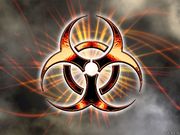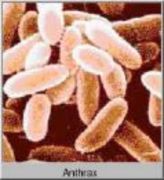BIO-TERRORISM
Bioterrorism Definition
The intentional or threatened use of disease causing microscopic organisms or microorganisms such as fungi, bacteria and viruses to cause death or disease, insight fear, intimidate and cause chaos in a mass population. These disease causing microorganisms or biological agents usually produce toxins that cause disease and even fatal illnesses in humans, animals and plants. Also, these biological agents can slip by undetected or recognized because most are colorless, odorless and tasteless. Terrorists can use this to their own advantage and spread biological agents through air, through water or in food. This then gets to high density civilian populations, who aren't protected immunologically from these biological agents, which causes panic and fear.
Bioterrorism Agent Categories
Category A-
These type of biological agents or toxins pose the highest risk to national security because four reasons:
- Easily transmittable from person to person
- Can cause high death rate
- Can cause high public panic and social disruption
- Requires special action for public health preparedness
Category B-
These types of biological agents or toxins pose the second highest risk.
- Moderately easy to spread
- Results in moderate illness rates and low death rates
- Requires increased CDC laboratory capacity and disease monitoring
Category C
These types of biological agents or toxins pose the third highest risk and are emerging pathogens that can be bioengineered.
- Easily available
- Easily produced and spread
- Has potentially high morbidity and mortality rates
Biohazard Symbol
Works Cited
Bioterrorism Overview. 2007. 16 April 2009. http://www.bt.cdc.gov/bioterrorism/overview.asp
Bioterrorism. 2007. 18 April 2009. http://www.interpol.int/Public/Bioterrorism/default.asp
Willey, Joanne, Linda Sherwood, and Christopher Woolverton. Microbiology. 7. New york: McGraw-Hill, 2008: 905- 906
Microorganism that can be used for a potential bioterror attacks
Microorganism Category Toxin Produced/Disease caused
Bacillus Anthracis A Anthrax
Clostridium Botulinum A Botulism
Filioviruses A Viral Hemorrhagic fever
Brucella B Brucellosis
Rickettsia B Typhus fever
Alphaviruses B Viral Encephalitis
Nipahviruses C Unknown
Mycobacterium tuberculosis C Multidrug resistant tuberculosisIncidences of bioterror in the United States of America
1984- Salmonella typhimurium was found in salad bars in Wasco County, Oregon and it sickened 700 individuals.
1998-Shigella dysentariae was released in a hospital laboratory breakroom
2001-Weaponized bacillus anthracis spores were delivered through U.S. Postal Service system
2 Major Signs of bioterrorism
1. Sudden increase in number of sick individuals (with non-endemic diseases)
2. Sudden increase in diseased animals
Interesting Bioterrorism Fact
A few kilograms of anthrax could kill as many people as Hiroshima sized nuclear bomb
Preparedness for Bioterrorism
In 1998, the United States started its first national effort to create a biological weapons defense.
1. Procurement of specialized vaccines and medicines for a national civilian stockpile.
2. Invigoration of research and development in the science of bio-defense.
3. Money and time in genome sequencing new vaccine research and new therapeutic research.
4. Development of improved detection and diagnostic systems.
5. Preparation of clinical microbiologists and the clinical microbiology laboratory as members of the first responder team to respond in timely manner to acts of bioterrorism.
At the first Interpol Global Conference on Bioterrorism held in 2005, scientists, counter-terrorism specialists, national and international governmental and nongovernmental agencies and other academics devised specific plans to combat terrorism.

